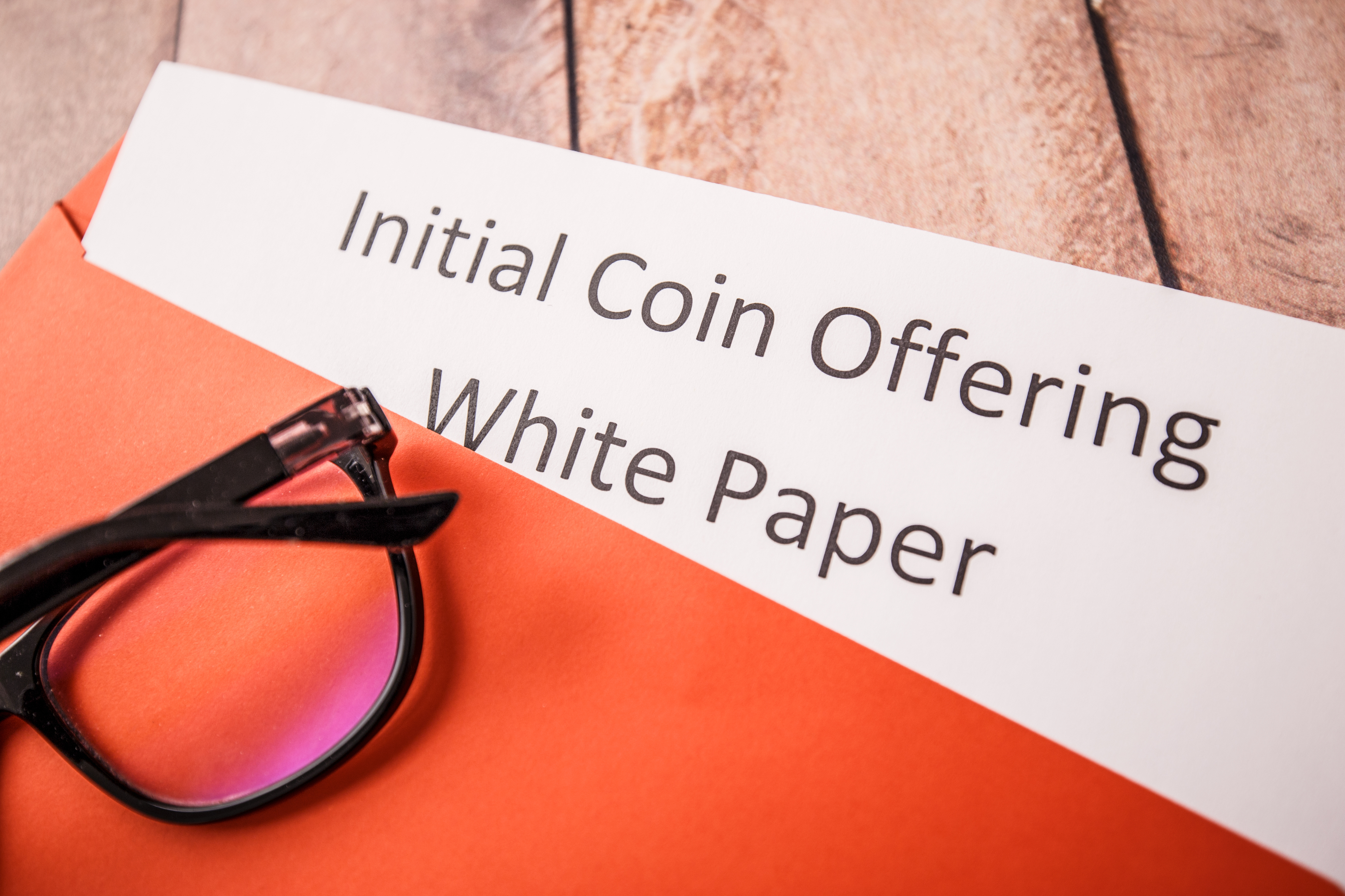No aspect of a cryptocurrency project is more representative of its worth than its whitepaper. It acts both as a symbolic milestone and carefully designed laying out of objectives. Those familiar with the market and blockchain projects should have an educating experience when reading whitepapers. However, whitepapers remain largely unapproachable, due to their esoteric nature and a broad inability to express technical concepts in terms accessible to the average reader.
The whitepaper is undoubtedly one of the most critical aspects of a blockchain project as it comprehensively sums up the goals, techniques, processes and resources necessary to run it successfully. Despite the important role it plays, in the vast sea of cryptocurrencies that are now flooding the market, there is a disconcerting number of projects that do not effectively communicate their raison d’etre in their whitepapers.
Oftentimes, such basic errors as spelling, grammar and contradictory information will be present – a sure sign that something is not quite right with the project. The task of constructing a whitepaper is a difficult one – it must cover the technical aspects of a project in detail while also remaining relatively comprehensible to the general public. This is especially true for cryptocurrencies, where many of the readers are not trained to deconstruct academic writing, and are only fresh enthusiasts seeking to gain knowledge about a particular technology.
Balancing these needs is one of the major challenges for those tasked with writing a whitepaper. To help both writers and readers of whitepapers, we examine the characteristics of a solid whitepaper and identify the necessary pillar elements that simultaneously educate and enlighten potential investors on the key information of a cryptocurrency project.
What is A Whitepaper?
Broadly speaking, whitepapers are detailed guides to a project, product or service that places an emphasis on technical and industry-specific details. It is not intended for the lay audience, but for one more familiar with the particular industry. It is a report that presents an unresolved challenge with solutions to overcome it.
In cryptocurrency, a whitepaper is a comprehensive report, often highly technical in nature, that a project usually releases in the lead-up to their ICO, though it may be released at any point. While the details may vary from project to project, it is ordinarily composed of technical, commercial, financial and employee information, presenting the reader with a complete overview of what the project sets out to accomplish, and how and why they plan to do it.
In the blockchain world, whitepapers can be found at various points on the readability spectrum. Some may be far too academic in nature, limiting itself to all but the most educated of readers, while others may omit critical technical information and instead read more like a marketing brochure. Ostensibly, this is for the convenience of the less technically-oriented audience, and to possibly attract a larger readership.
Ideally, whitepapers should be given much thought as they act as an everlasting repository of information for all of the essential details of a cryptocurrency project. As far as investment consideration is concerned, there is nothing more significant than the whitepaper and the wise investor knows that no decisions should be made without a thorough analysis of it.
You will notice how highly projects value their whitepapers by the heavy efforts put in to publicize them. Whitepaper links are proudly displayed in noticeable spots on the website, Twitter is used to announce that the whitepaper is released and excited discussions on Reddit is encouraged.
Why Investors Scrutinize Cryptocurrency Whitepapers

What specific role does a whitepaper play from an investor’s point of view? This will give a better perspective on the ideal whitepaper, as investors form the bulk of the intended audience.
A whitepaper forms the deepest impression, indicating a team’s willingness to sincerely communicate its very reason for existence. A good whitepaper will reveal how well-prepared a team is and the conviction placed in the project. A whitepaper is a document that a team must stand by as it undergoes vigilant examination from its backers and potential investors.
Ambiguous wording and misleading information will not survive public examination from the devoted cryptocurrency community. Several ICOs have already fleeced naive new investors, and there has been growing discontent from both inside and outside the community with regards to the exploitable loopholes of ICO launches. Whitepapers serve as a bulwark against this unethical behaviour.
Veteran cryptocurrency participants know that one can sense the smell of anything fishy from a whitepaper. It is easy to discern the logical, commercial and financial sensibility of a project from its whitepaper. Questions relating to the financial demands of an ICO, robustness of technological architecture and the sheer common sense practicality of a project are all made clear in the documentation.
These latter points prophesize the potential success, or lack thereof, of a project; they are criteria that must be soundly addressed if a project is to be taken seriously.
For these reasons, the experienced investor scrutinizes whitepapers with a magnifying glass. Granted, it is not easy for a beginner to sift through the technical jargon that fills the documentation. However, the technical language of cryptocurrency is something that a crypto enthusiast will learn over time. And one begins to sense, roughly, the adequate technical capability of a project and team by second nature in due time.
Thus, whitepapers are persuasions that a team must convincingly construct to mark off the criteria of logical existence, commercial viability and technical robustness. These criteria must be met, at the very least, to earn investor trust – and much more, if it seeks long-term survival in the long marathon that is the cryptocurrency race.
Of course, this is far from simple, because, as we said, a whitepaper must juggle authoritative information on the project while also remaining accessible to the less knowledgeable minds of public investors. It serves both as an introduction and as an encyclopaedia.
How do we do that? Let us examine what is necessary for a good whitepaper and how to write it.
The Format of a Cryptocurrency Whitepaper
A whitepaper is a formal document that follows a strict format. The general outline is typically as follows:
- a problem being presented
- solutions to the problem
- the technology
- platform and processes that execute the solution
- the applications (use cases) of the solution,
- the team
- resources
Verifiable statistical information is greatly valued and adds authority to a whitepaper. It is not uncommon to see complex mathematical and scientific calculations in whitepapers. These are likely to only be understood by a select few.
However, it is a sign of further commitment by the team to stand by their project, as the calculations are not easily faked proofs. You cannot expect to fool discerning readers with false calculations.A
A whitepaper should generally be formatted as a PDF. This is because PDF files can be distributed, yet are difficult to edit. It compels the author(s) to expend energy and pay attention to its construction, for if a mistake is made, it suffers a blow to its reputation. The work is likely to have been disseminated and the PDF format does not lend itself to easy corrections.
The length of a whitepaper is dependent on the information there is to offer. It is not necessary to have a lengthy whitepaper in excess of 30 pages – more words does not mean better information. Quality of information is paramount and often it can be condensed to a reasonable length. It is easy to spot fluff and redundancy.
To reach the broadest audience possible, it would be helpful to provide the whitepaper in multiple languages. This can be a time-consuming process, but if a little extra is spent on professional translations, the whitepaper would receive much appreciation from the community, particularly from those who do not speak English fluently.
Common languages are Mandarin, Korean, French, German, Spanish and Russian. This is also another indication that the project is making a strong effort to be heard. It is essential to be as accessible as possible in every aspect of the whitepaper, without having to compromise on the technical details.
As for the tone of writing, it should not veer too much in either direction. It is true that technical jargon and academic phrasing suit the nature of whitepapers better, but there should exist some consideration for more plain exposition.
Academic explanations by their very nature suit technical architecture and solutions better, but the essence of it should also be summarized and communicated in comprehensible analogies or newbie-friendly wording at some point in the paper. It would be remiss to limit the understanding of a critical part of the project to a select few readers.
It goes without saying that a whitepaper must not be plagiarized. It is lazy, dishonest, and a disservice to the readers. Even if it’s to recap some popular facet of whitepapers, such as blockchain basics or history, it does not do well to plagiarize.
One would assume that the team has the expertise and writing competence to explain what a blockchain is, given that they have experience and knowledge in the space. The crypto community is not easily fooled, and sheer laziness and incompetence will be picked up on quickly.
Key Elements of a Cryptocurrency Whitepaper

A more detailed outline of the format of a whitepaper is listed below. These are the elements that make up a whitepaper. A cursory scan of a few whitepapers will showcase variance from one to the other. The form and style will largely depend on the nature of the talking points but, for the most part, the following elements are common to all whitepapers.
Abstract
In a research paper, an abstract sums up the purpose of the project, problems and solutions in the field, and the techniques employed to achieve that solution.
Abstracts are not present in every whitepaper. It is a more formal inclusion, present in academic papers, and is often missing from cryptocurrency whitepapers. A notable exception is the Bitcoin whitepaper, written by Satoshi Nakamoto, which included an abstract that succinctly addressed the problem of centralized systems, solutions to the double-spending problem, a brief description of the method and how it works.
While it is not absolutely essential, an abstract offers readers a quick overview of the bare basics of a project’s problem and solutions. If it piques their interest, they may choose to continue reading the entire whitepaper. These opening statements save a lot of valuable time and lend credibility to your project.
Introduction
It is helpful to brief the reader on the particular industry that the project is operating in. While some may know the technology supporting the project, perhaps being tech-insiders themselves, far fewer are likely to know about the dynamics of the industry. This includes its current standard of operations, the challenges it faces, revenue models, global market share and so on.
The introduction can inform readers of the status quo of the industry and the obstacles for growth. The case for blockchain technology is made here, and should include how it would eliminate the hurdles and help the industry flourish. Specificity and factually correct information are necessary. Naturally, there must be evidence to back up any claims.
Listing the specific factors that hinder the growth of the industry and explaining them in a manner that is accessible gives potential investors a sense – of the common sense kind – of the use of the project. A solution to the problem in brief, without going into the technicalities, can also be included.
The introduction doesn’t call for an academic tone. Rather, it is used to gently inform readers of the outline of the problem and possible solutions, and table detailed technically-worded expositions for a later section. This will help the reader gain a general idea of what the scenario is like and will make the technical aspects more approachable.
Ripple’s whitepaper on its consensus protocol is an excellent example of an introduction balancing information and accessibility. On the whole, Ripple’s paper is short and sweet.
Definitions
To further aid understanding, it is recommended to define a list of significant and commonly occurring terms in the whitepaper. These will be the technical terms and/or those unique to the project in question. This will act as a sort of appendix for the reader, who can return to it for clarification when reading the technical sections of the whitepaper.
For example, the definitions of the specific components involved in the platform’s processes would be listed here. ICON’s (ICX) definition of the NEXUS and C-Rep are well-written definitions that clearly define their roles and functions while also being quite readable.
For an instructive lesson on how to tackle this deftly, consider how Zcash has defined terms both formally and informally in their whitepaper. It gets quite heavy on the mathematics, but they have also included simpler definitions for the lay reader.
Consensus Algorithm
As an essential part of a blockchain network, the consensus algorithm requires detailing in the whitepaper. This section is typically written in a technical manner, with mathematical proof accompanying it. If a consensus algorithm is unique in any way, it can be compared to other algorithms, allowing its salience to be highlighted. The advantages can be emphasized.
This section should also describe the actual working mechanism of the algorithm – how the agreement is reached. Other concerns include how the system protects itself from externals attacks, such as a 51% attack. If the project is fortified against these in some way, then it is relevant to communicate them.
Solutions
This is where the real technical speak begins. Every blockchain project has different elements which make up its overall solution to the problem at hand. This section, put under the umbrella term “Solutions” will need subsections which deal with each individual component of the solution.
IOTA academically runs through their solutions in their whitepaper. Dense with technical terms, even an expert in the field will need much re-reading to make sense of it.
OmiseGo’s whitepaper (OMG), on the other hand, juggles clarity and technical exposition. Pay particular attention to how they have used a step-by-step example in the section “Bitcoin Clearinghouse” to explain the transaction process. It is preceded by what a clearinghouse is and why it exists, along with its role in the project’s platform.
This section is an examination of the research and technical proofs. A solid project, like IOTA, confidently explains all of its mechanisms with scientific and mathematical arguments – something which cannot be faked.
There is no dressing up of concepts here – just an explanation of the facts. If there is room for a simplified and reasonably diluted translation, it is worthwhile to communicate.
Technical Architecture and Platform Operation
After having offered the solutions to the problem, it is time to present how they will be applied in an actual system. The core components of the network protocol and each of their functions are to be discussed, with the motivations for their existence. Not every project goes into detail about the exact architecture of their network, but all of repute do so.
The previous two sections conclude the bulk of the technical material of the whitepaper. This can now be followed with an explanation of how the platform works between the various stakeholders in the ecosystem.
It would be good to list the stakeholders and components of the ecosystem. Diagrams can help make it easy to understand the flow of the system. How are the tokens involved in facilitating interactions between the various stakeholders?
IOTA is again a good example of technical architecture well explained.
Token Information
To ensure complete transparency, projects often list their funding sources and allocation in their whitepapers. Investors get to see where their money will be spent and the details of the token system.
This portion of the whitepaper offers purely financial information about the project. List the details of any financial backing that has been received and go into the numerical figures of the token. Take a look at TenX’s whitepaper, which explains in detail its token sale and funding allocation details.
Roadmap
Having described the project and its technical aspects, it is now time to explain to potential investors the path forward that has been mapped out by the team.
What are the technical and business milestones of the project? How and when are iterative changes to the blockchain being planned? When will the platform go fully public? These are just some of the points to be addressed in the roadmap section.
Golem Network Token offers a nice roadmap section that deserves emulation.
Use Cases/Commercial Application
This is one of the most significant aspects of a whitepaper, and not just because it covers how the project will manifest itself in the real world. It is significant because it is one of the few sections that will be instantly accessible to every reader, and the most attractive as well.
It is imperative to describe how the project will find its way into commercial use. After all, a project may be backed by foolproof technical and mathematical features, but the benefit of that is lost if it is not expressed in a relatable manner, with clear tangible applications. What revenue generating capability does it have? What results, in statistics, does the introduction of the technology bring?
Potential business partnerships that would accelerate adoption and help spread the use of the platform can also be stated, as they are also two very crucial aspects of a project’s potential. Essentially, this is the section that persuades investors from a business point of view.
Team
The community is happy to hear about the individuals behind a project. It helps an investor learn about the experience and expertise of the individuals running the project. This extends to project advisors. Having a group of renowned advisors can raise the credibility of a project in the eyes of investors.
References
This is self-explanatory. The reference section credits the various resources that have been used and is the citation for the statements made over the course of the whitepaper.
Source Code is Like a Second Whitepaper
Many educated members of the community, and certainly the developers among them, know that what makes or breaks a blockchain project is the underlying technology which is built on programming.
Reading the source code is an irreplaceable method of learning about a project. In a sense, a whitepaper exists to translate what is present in computer languages into human language. That said, it’s important to know that there is a lot that can be lost in translation.
In blockchain (and many other industries, given that the world is becoming increasingly digital), knowing programming is an indispensable skill. It offers greater clarity into a project and it helps one spot the inconsistencies between a project’s supposed characteristics and its actual technical buildup.
For anyone writing a whitepaper, remember that the source code of the project functions as a second whitepaper. The source code should reflect the transparency that is claimed and executed in the whitepaper. GitHub can serve as a public profile and it will receive criticism, both constructive and destructive, from those knowledgeable about code.
The point is that the clarity, transparency and approachability people expect in a whitepaper is not limited to just the whitepaper. These are core principles and the team that should reflect these values in all the work they do in the project.
A dishonest project will be caught out on this but a sincere one will exhibit this. Not because they are making a conscious effort to possess these qualities, but because they embody these qualities naturally and it shows in their work. In other words, it is something that cannot be faked.
Why Cryptocurrency Whitepapers Matter

At this point, it should be clear that a whitepaper is an indispensable element of a cryptocurrency project. It is a written commitment, on the permanent and global publication platform of the internet, to the disruptive and future-shaping effects that a project aims to accomplish. It is the act of putting money where one’s mouth is.
From a practical point of view, a whitepaper is meant to attract investors. If a project and whitepaper is solid, it is assured that investors, particulary well-informed ones, will spread the word about high potential projects.
Finally, a whitepaper also acts an effective method of marketing a project. For one thing, the cryptocurrency community demands the existence of a whitepaper to even consider the viability of a project. Given the explosion of the market in the past year, whitepapers have become both a mark of authenticity and a form of validation for new projects.
Whitepapers are also enthusiastically distributed over internet forums and social media, giving a project a scale of outreach otherwise unavailable without one. This is another significant reason to publish a whitepaper when launching a new cryptocurrency project.
Conclusion
Whitepapers may seem like a daunting challenge, but they are very much necessary and basically mandatory in today’s crowded crypto space.
However, a genuine team should have no problem assembling the information they need to construct a whitepaper. With feedback and deliberation, that fine balance between accessibility and technical exposition can be found. To examine different cryptocurrency whitepapers, visit whitepaperdatabase.com, which is an extremely thorough resource.
Fortunately, the development of a blockchain project is quite open and inclusive – it is possible for one to become a blockchain developer and even create a own blockchain in half an hour. While that may be something of a double-edged sword because it raises the probability of low quality and shady projects, it also empowers the individual – any individual – to start a dream project that may just benefit society greatly. In such a case, writing a whitepaper would ease the process of establishing a foothold in the blockchain industry while also educating the general public about the project.
It can’t be said enough: whitepapers matter.
Are you starting a blockchain project that is in need of a whitepaper? Invest In Blockchain can help! Email us to enquire.
Related: How To Run A Successful ICO (Part 1): Should You Even ICO?

